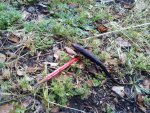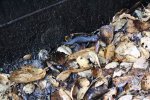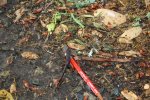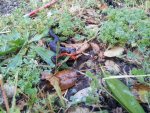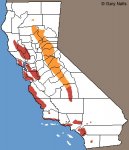beberly37
New member
As I mentioned in my introduction post, I'm here because I want to learn more about the newts that swarm my yard when it rains and potentially snag some to keep indoors.
I believe these are T Rivularis (black and red) and T granulosa (brown and yellow). Can I get a confirmation on that?
These photos were taken this morning (4/7/2015) about 60 miles north of San Francisco. I have been anxiously waiting for more rain to our drought stricken area, partly to fill our well, but recently so I could get some pics of these guys.
Thanks for the input.
Worth noting that we regularly see both of these species, but the vast majority, 20 to 1 at least, are the red bellied. Also, I put the pencil there for size comparison, I may just have been noticing them more today, but I feel like there were many more tiny/small newts today than usual (could be time of year).

